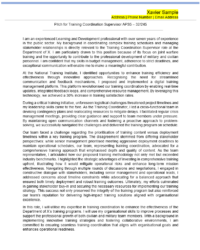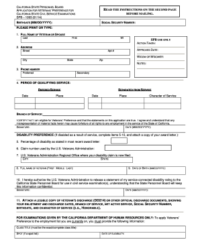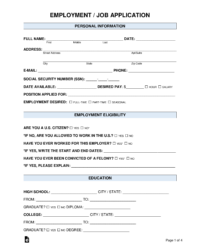Utilizing such a framework offers significant advantages for both applicants and hiring managers. It streamlines the application process, saves time, and ensures consistency in evaluating candidates. For job seekers, a well-crafted submission using this framework can significantly enhance their chances of making a positive first impression and securing an interview. For employers, it facilitates the identification of qualified candidates who possess the desired skill set and experience.
The following sections will delve into the key components of an effective structure for sales positions, offering practical guidance on how to create one and highlighting best practices for both applicants and employers.
Key Components of a Sales Application Framework
Effective frameworks for sales positions typically include several crucial components designed to capture relevant applicant information. These components enable hiring managers to assess candidates comprehensively and efficiently.
1. Contact Information: Accurate and up-to-date contact details are essential. This section should include full name, phone number, email address, and professional social media profiles (e.g., LinkedIn). A physical address is typically optional.
2. Summary/Objective Statement: A concise and compelling overview of professional experience and career goals, tailored to the specific sales role. This section should highlight key achievements and demonstrate the applicant’s understanding of the target market and company.
3. Work Experience: A detailed chronological listing of previous employment, including company names, dates of employment, job titles, and responsibilities. Emphasis should be placed on quantifiable achievements and contributions to previous sales teams.
4. Education: Information on academic qualifications, including degrees, certifications, and relevant coursework. This section should demonstrate the applicant’s commitment to continuous learning and professional development.
5. Skills: A comprehensive list of relevant skills, including technical proficiency (e.g., CRM software), sales methodologies, communication abilities, and language fluency. This section should align with the specific requirements of the target sales role.
6. Awards and Recognition: A showcase of achievements and accolades related to sales performance, demonstrating a track record of success and exceeding targets. This section can include sales awards, industry recognition, and client testimonials.
7. References: Contact information for professional references who can attest to the applicant’s skills, experience, and work ethic. References should be informed in advance and prepared to provide feedback to potential employers.
A comprehensive framework facilitates efficient candidate evaluation based on relevant qualifications and experience. This standardized structure allows for effective comparison and selection of the most suitable individuals for sales roles, ultimately contributing to improved hiring outcomes.
How to Create a Sales Application Framework
Developing a robust framework for sales applications requires careful consideration of key elements to ensure effective candidate evaluation and streamlined hiring processes. The following steps outline best practices for creating such a framework.
1. Define Essential Information: Determine the specific information required from applicants based on the target sales role. This includes contact details, work experience, education, skills, and any other relevant qualifications.
2. Structure the Framework: Organize the information into logical sections to facilitate easy navigation and review. A clear and structured format enhances applicant comprehension and ensures consistency in data collection.
3. Craft Clear Instructions: Provide concise and unambiguous instructions for each section, guiding applicants on how to complete the application accurately and thoroughly. Clear instructions minimize ambiguity and improve the quality of submitted information.
4. Ensure Accessibility: Make the framework accessible to all applicants, considering various formats and potential accessibility needs. Offering multiple formats (e.g., online, printable) promotes inclusivity and wider applicant reach.
5. Implement Review Processes: Establish a system for reviewing and updating the framework periodically. This ensures the framework remains relevant and aligned with evolving job requirements and best practices.
6. Pilot Test the Framework: Before widespread implementation, conduct pilot testing to identify potential areas for improvement. Gathering feedback from both applicants and hiring managers can enhance usability and effectiveness.
7. Integrate with Applicant Tracking Systems: Consider compatibility with existing applicant tracking systems (ATS) to streamline the application process and facilitate data management. Integration with ATS enhances efficiency and reduces manual data entry.
A well-designed framework streamlines the application process, improves candidate experience, and facilitates efficient evaluation, ultimately contributing to successful hiring outcomes in sales roles.
Standardized frameworks for sales positions offer a crucial tool for both job seekers and employers. They provide a structured approach to presenting qualifications, enabling applicants to showcase relevant skills and experience effectively. Simultaneously, these frameworks streamline the hiring process for organizations, facilitating efficient candidate evaluation and selection based on consistent criteria. The key components, including contact information, experience summaries, skill listings, and references, enable a comprehensive overview of applicant profiles.
Effective utilization of these structured frameworks can significantly enhance recruitment outcomes. By providing a clear and consistent approach to the application process, organizations can attract top talent and build high-performing sales teams. Adoption of such frameworks represents a strategic investment in improving talent acquisition and contributing to long-term organizational success through enhanced sales performance.


